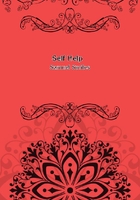
第23章
Heilmann was born in 1796 at Mulhouse, the principal seat of the Alsace cotton manufacture. His father was engaged in that business; and Joshua entered his office at fifteen. He remained there for two years, employing his spare time in mechanical drawing. He afterwards spent two years in his uncle's banking-house in Paris, prosecuting the study of mathematics in the evenings. Some of his relatives having established a small cotton-spinning factory at Mulhouse, young Heilmann was placed with Messrs. Tissot and Rey, at Paris, to learn the practice of that firm. At the same time he became a student at the Conservatoire des Arts et Metiers, where he attended the lectures, and studied the machines in the museum. He also took practical lessons in turning from a toymaker. After some time, thus diligently occupied, he returned to Alsace, to superintend the construction of the machinery for the new factory at Vieux-Thann, which was shortly finished and set to work. The operations of the manufactory were, however, seriously affected by a commercial crisis which occurred, and it passed into other hands, on which Heilmann returned to his family at Mulhouse.
He had in the mean time been occupying much of his leisure with inventions, more particularly in connection with the weaving of cotton and the preparation of the staple for spinning. One of his earliest contrivances was an embroidering-machine, in which twenty needles were employed, working simultaneously; and he succeeded in accomplishing his object after about six months' labour. For this invention, which he exhibited at the Exposition of 1834, he received a gold medal, and was decorated with the Legion of Honour.
Other inventions quickly followed - an improved loom, a machine for measuring and folding fabrics, an improvement of the "bobbin and fly frames" of the English spinners, and a weft winding-machine, with various improvements in the machinery for preparing, spinning, and weaving silk and cotton. One of his most ingenious contrivances was his loom for weaving simultaneously two pieces of velvet or other piled fabric, united by the pile common to both, with a knife and traversing apparatus for separating the two fabrics when woven. But by far the most beautiful and ingenious of his inventions was the combing-machine, the history of which we now proceed shortly to describe.